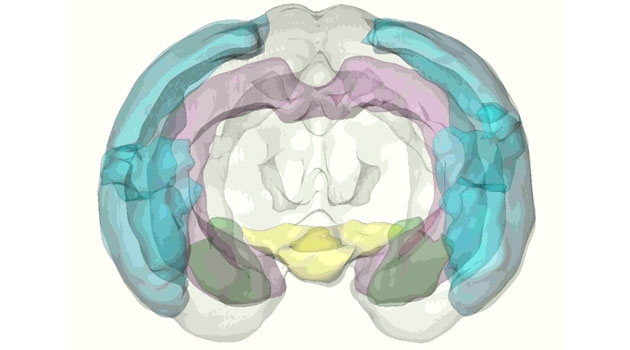Gene expression changes in the brain of tame domestic rabbits
Behavioural differences between wild and domestic rabbits are striking as Charles Darwin described in "On the Origin of Species". An international team led by Leif Andersson at Uppsala University now reports changes in gene expression pattern across the brain between wild and domestic rabbits, which likely contributed to the evolution of tameness during domestication. The study is published in Genome Biology and Evolution.
Domestication has long been a major topic in evolutionary biology, as it leads to significant phenotypic changes in animals and plants over a short period of time. The European rabbit is among the most recently domesticated animals but exhibits distinct behavioural differences from their wild conspecifics. A previous study by the research group suggested that a large proportion of the genetic changes targeted by selection during domestication affect the regulation of genes involved in nervous system development.
“We hypothesized that the genetic differentiation from wilds altered gene expression patterns in their brain,” says Miguel Carneiro of the University of Porto, one of the lead authors. “We decided to test this hypothesis by comparing the expression pattern across the brain of wild and domestic rabbits.”
Compared gene expression patterns in four brain regions
The research group compared gene expression patterns in four brain regions between newborns of wild and domestic rabbits and detected hundreds of genes differentially expressed between the two. “One of the significant findings was that the amygdala of domestic rabbits showed upregulation of genes involved in dopamine signalling,” says Daiki Sato, one of the shared first authors and PhD student at Tohoku University, who has worked on this project under a collaborative research program as part of his PhD thesis. “Dopamine is one of the most important neurochemicals in our brain, and its regulatory roles in fear response has been discussed widely.”
“Another interesting pattern was that all the 21 differentially expressed genes associated with ciliary function were consistently downregulated in the hippocampus of domestic rabbits,” explains Nima Rafati from Uppsala University and National Bioinformatics Infrastructure Sweden (NBIS) SciLife Lab, one of the shared first authors. “Ciliary beating of ependymal cells in the brain ventricles generates a cerebrospinal fluid flow, which is essential for neural stem cell proliferation and neuronal migration. Given the importance of these ciliary genes for brain development, we hypothesize that the changes we report here contributed to the evolution of tameness in domestic rabbits.”
“Domestication is one of the most important developments in human history and a model to better understand the evolution of animals and plants in general”, says Professor Leif Andersson at Uppsala University and Texas A&M University, who led the study. “This is a significant study that illustrates how the animal brain evolved under selection and how domestic animals acquired tolerance toward humans through regulatory changes of genes that were critical during animal domestication” Andersson concludes.
The study was supported by the Knut and Alice Wallenberg Foundation and the Swedish Research Council.
Annica Hulth
Publication
Sato. D.X. et al. (2020) Brain transcriptomics of wild and domestic rabbits suggests that changes in dopamine signalling and ciliary function contributed to evolution of tameness. Genome Biology and Evolution. DOI: https://doi.org/10.1093/gbe/evaa158

